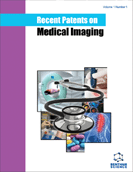Abstract
Productivity in the drug discovery and development process has seen a drastic decline over the last few years. Clearly, traditional approaches to drug development are not working. The new concept called “microdosing studies” was recently announced as a promising methodology for accreting drug development. The microdosing studies is a concept by administrating a low dose (microdose) of a candidate compound to human volunteers to obtain in vivo human pharmacokinetic (PK) data at an early stage of drug development. As a result unpromising candidate drugs can be eliminated at an earlier stage of drug development. A key component for this concept is highly sensitive analytical methods such as positron emission tomography (PET), accelerator mass spectrometry (AMS) and liquid chromatography-mass spectrometry (LC/MS/MS). This issue focuses on PET methodology from basic to future prospects for drug development and patents related to it.
Keywords: Positron emission tomography (PET), PET/CT, drug development, microdosing, imaging, microdosing approach, primary pharmacodynamics, conventional clinical trials, accelerator mass spectrometry, liquid chromatography-mass spectrometry, non-invasive imaging, in vivo human pharmacokinetic, proton-rich isotopes, line of response, radiopharmaceutical sciences
 4
4

